
Fly through our inspirations
At Ubac, our idea is to draw inspiration from nature while designing for the future. This year, for KOTO, our recycled cotton trainer, we drew our colour palette from the world of birds, inspired by our commitment to the LPO, to which we donate 1% of our sales.
Dive with us into the shimmering world of the birds that inspired KOTO.
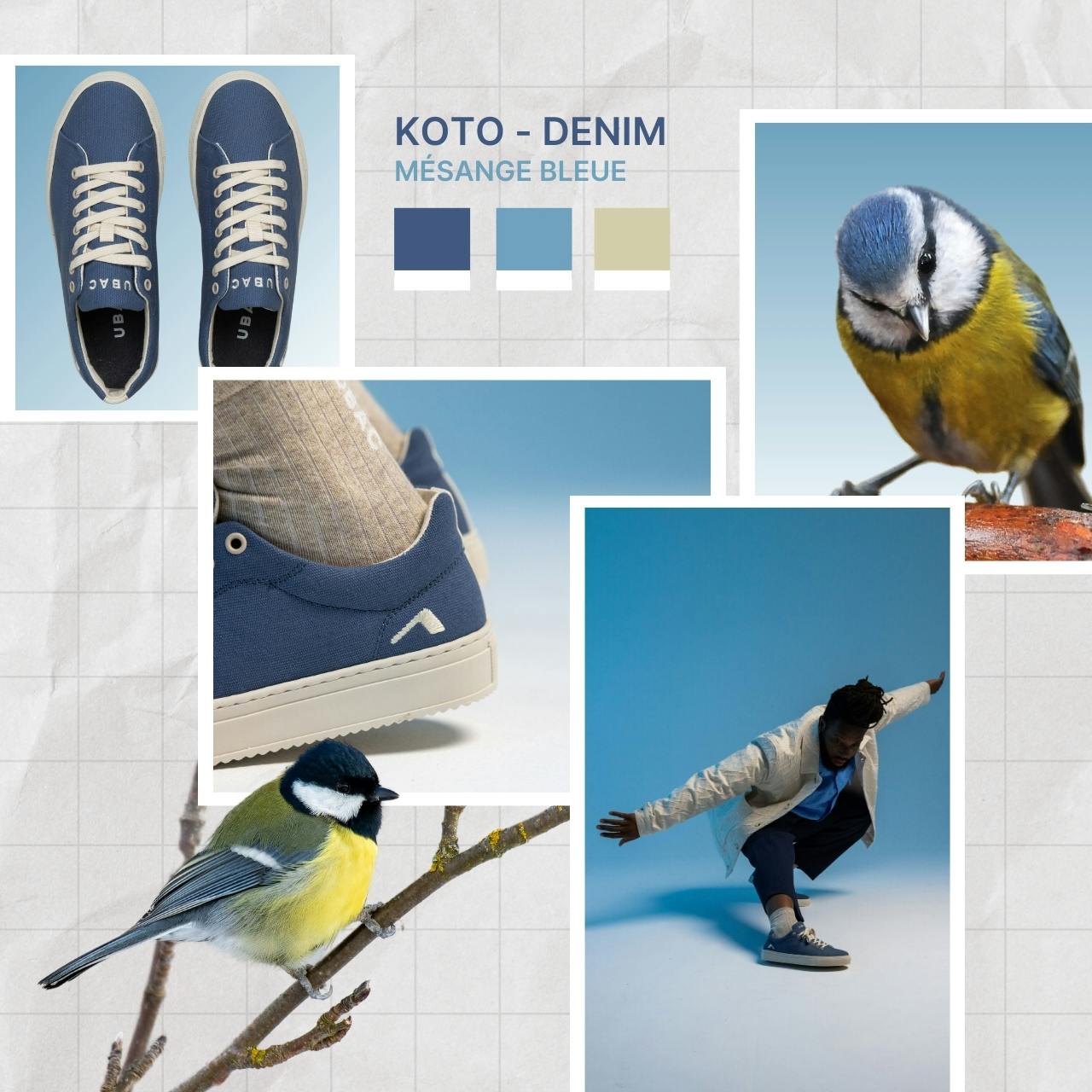
THE BLUE TIT AND KOTO DENIM
Blue tits are small passerines with colourful, clean-cut plumage, characteristic of the paridae family. They are found mainly in deciduous forests stretching from Europe to Asia, but also in copses, parks, hedgerows, gardens and coniferous forests. Rarely found on the ground, tits are constantly on the lookout for food, whether insects or seeds depending on the season, and may move closer to urban areas if food is too scarce. They can be aggressive in defending their territory, usually a cavity with a small enough entrance to protect themselves from predators. Housed in this way, they lay 9 to 13 eggs from April to July, often in 2 stages, with chicks becoming completely independent within 4 weeks, their first flight taking place between the 19th and 20th day after hatching. Their population is widespread and healthy. With the exception of a few local declines, the species is considered to be non-endangered.
THE BROLGA CRANE AND PINK KOTO
Endemic to the Australian continent, brolga cranes cohabit with sandhill cranes, both species preferring shallow marshes, wet meadows or brackish waters. With their gregarious behaviour, they can form groups of up to 100 individuals. These groups are both territorial and family-based: brolga cranes form bonds that last a lifetime through complex courtship displays. During the breeding and nesting season (which varies from region to region), they build large mounds in thick, damp vegetation, where the chicks spend almost 100 days developing their plumage while being fed, unable to leave the nest.
In terms of diet, the species has a very varied diet: tubes of aquatic plants and other vegetation, but also small animals such as crustaceans and mammals, as well as cereals and nuts. Their population is not threatened overall and numbers between 20,000 and 100,000 individuals.
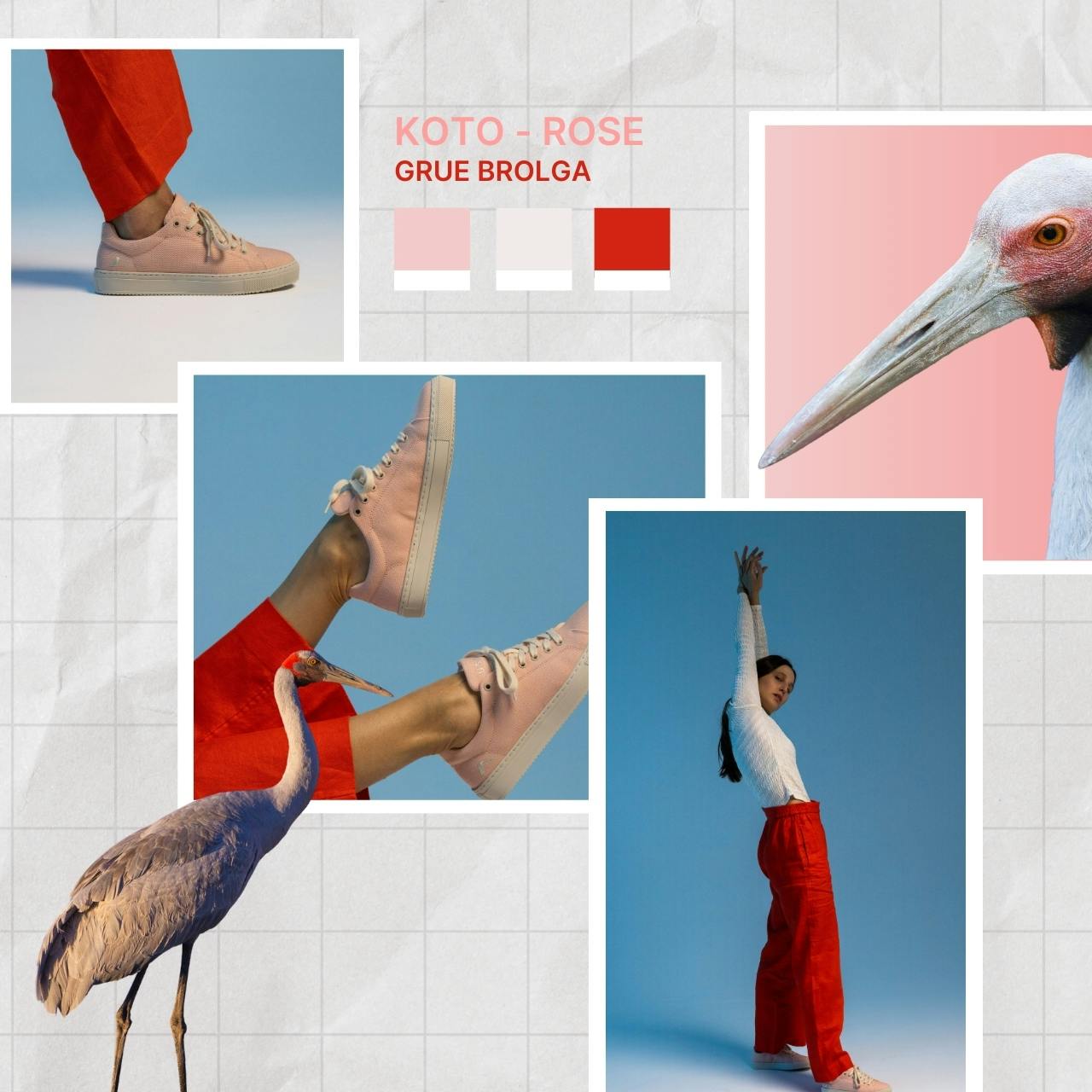
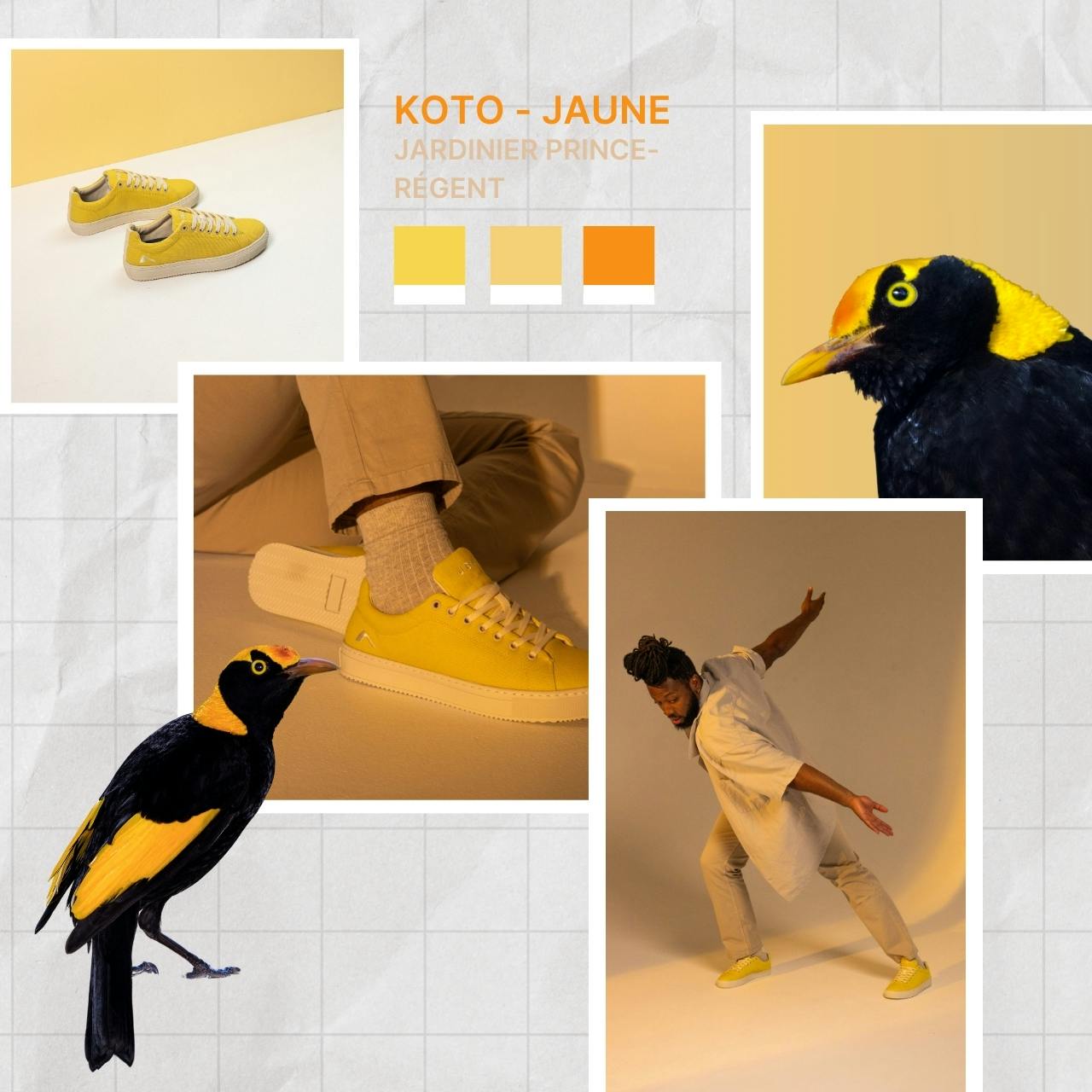
REGENT BOWERBIRD AND YELLOW KOTO
In the coastal forests and plains of Australia and New South Wales, the bowerbird feeds on fruit and insects. A member of the gardener family, the species places great importance on aesthetics, engaging in remarkable courtship displays to reveal its colours, one of the rare moments when it is on land. Their cradles, well hidden in the vegetation, are an arrangement of vertical sticks, forming a tunnel decorated with yellow paint and red or dark yellow elements. Snail shells, berries, leaves and pebbles are arranged at the two narrow ends of the tunnel. Such a cradle requires maintenance, and the dominant male is often assisted in this task by the non-breeders. However, brown females do not lay eggs indoors, but two in their own nests: Prince-Regent gardeners are probably polygamous.
WHITE WINGER CHOUGH AND BLACK KOTO
Like the gardener, the white winger chough belongs to the order Passeriformes and is endemic to Australia, where it is found in woodlands and open forests in the east and south-east. Its affection for wetlands is due to the abundance of leaves hiding small invertebrates, the basis of their diet, but also of mud, essential for the construction of its ball-shaped nest. Long to build due to the drying time between layers, the corbicrave's nest is placed 15 metres above the ground, despite the fact that it is not very skilful in flight and spends most of its time on the ground with its family. This is a gregarious species whose chances of survival depend on its numbers: there are between 4 and 20 individuals in a group, all from the same nesting pair, which may take young from other broods. The whole family helps to build the nest, search for food and incubate the eggs, which take 19 days to lay 3 to 10 eggs. The young are dependent on their family, and with good reason: it takes them almost 4 years to reach maturity.

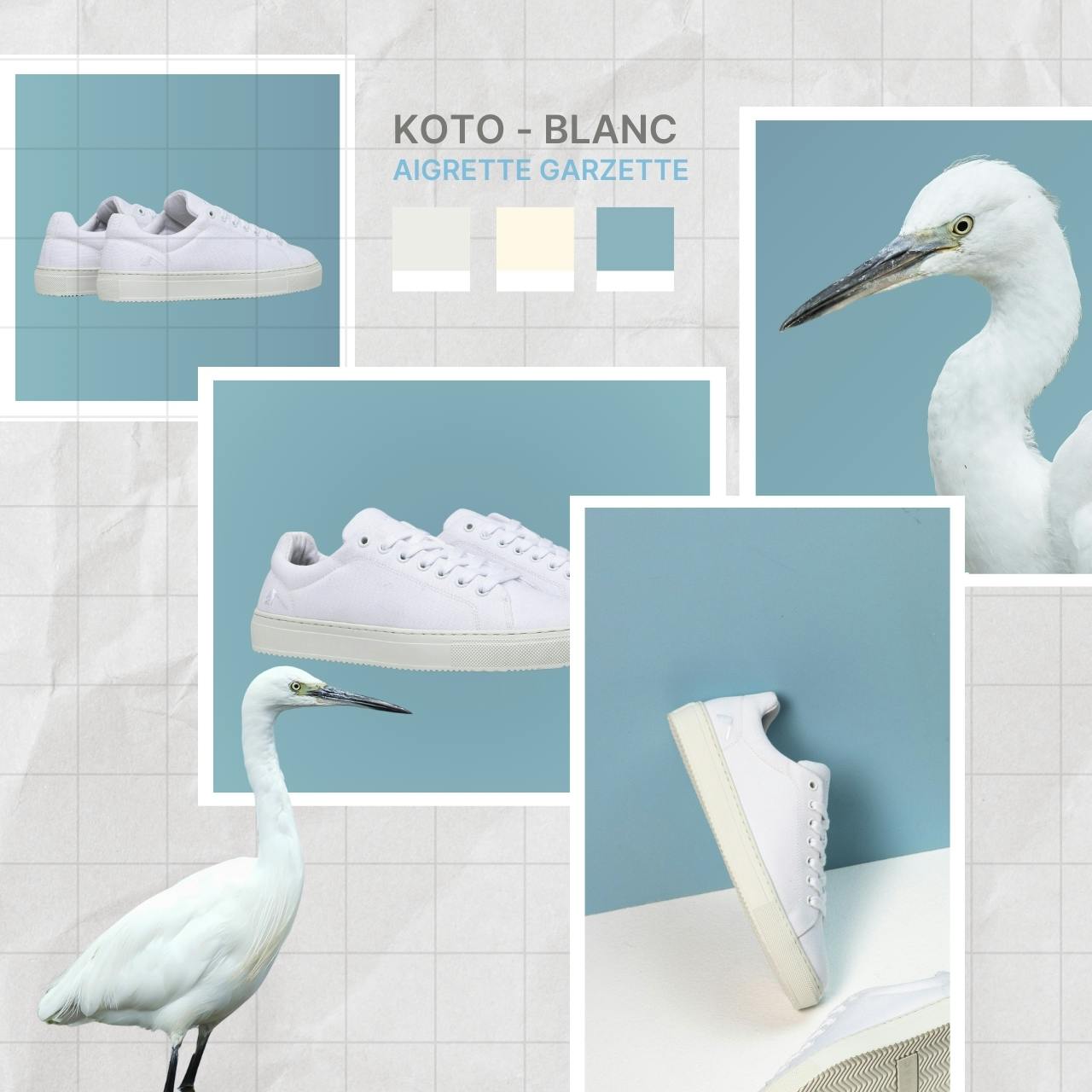
LITTLE EGRET AND WHITE KOTO
Like most ardeids, the little egret is a fish-eater: it prefers open water, whether fresh or brackish, and can be found over a large part of the globe, inland, near bodies of water, rice fields, salt marshes or estuaries. Due to its colonial breeding, it also needs tree-covered, scrubby and flooded areas to nest, often in cohabitation with other species. The nests are fragile and occupied for one season only, with 3 to 5 eggs laid 2 days apart. Incubation begins with the 2nd or 3rd egg laid and lasts 21 to 25 days, so the chicks are born days apart. At 3 weeks old, they venture out of the nest and take their first flight at 5 weeks. Groups of egrets may migrate in small, loosely-organised groups, or move to their resting places on the ground (in an open area such as a field or marsh) or perched (in a copse or on the edge of water).
WESTERN BOWERBIRD AND KAKI KOTO
The western bowerbird lives in Australia, in wooded areas close to aquatic areas. With a maximum of 15 individuals per group, this species is fairly solitary. Like the yellow bowerbird, it attaches great importance to its nest: built in a ficus tree, it is protected by its drooping branches and decorated with white elements: bones, shells, and green: buds, pods, pieces of glass. It can also collect ammunition or metal casings. The western bowerbird also paints with red plant substances. As vegetarians, they feed mainly on rock figs, fruit, flowers, buds, nectar and seeds. Another thing it has in common with the yellow bowerbird is that the western bowerbird is polygamous and uses its cradle to attract as many females as possible. The female alone looks after the clutch, consisting of 2 eggs, in a nest between 2 and 6 metres above the ground.
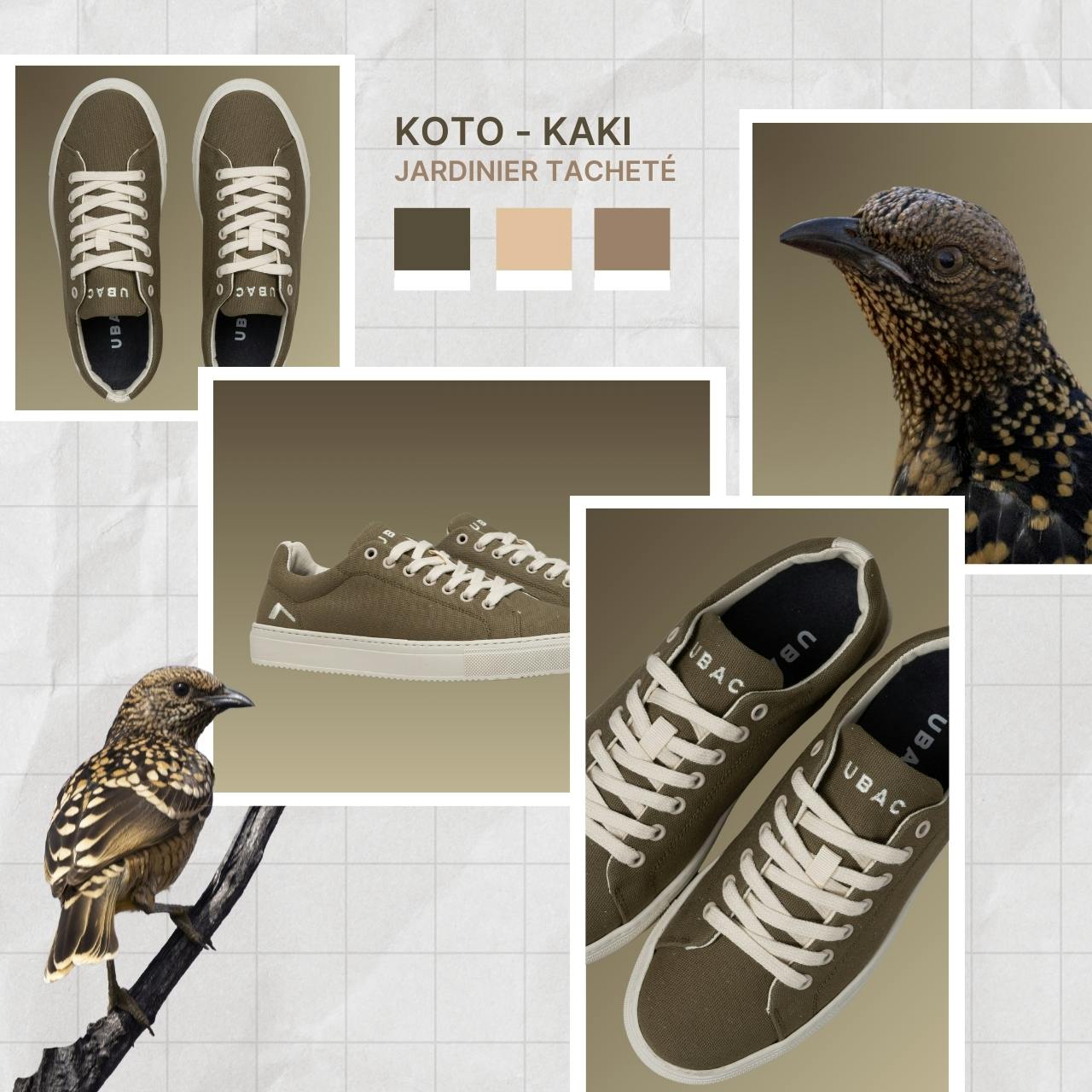

PALAWAN PEACOCK-PHEASANT AND TURQUOISE KOTO
An endangered species of the Galliformes order, the palawan peacock-pheasant is endemic to the Philippines, more specifically the island of Palawan. Its preferred habitat is humid forest close to the coast. A vegetarian bird, it eats mainly seeds, nuts, fruit, leaves and roots, supplemented by a few insects. It also uses them during its courtship, from the age of 3, which combines food and dance: ruffling its feathers, it waves a piece of food in its beak before dropping it in front of the female. If she accepts, the male begins the next part of the parade, revealing his colourful feathers. After breeding, the female lays 1 or 2 eggs in a nest on or above the ground, which she incubates for 18 to 20 days, while the male provides the food.
It's not just about taking inspiration from nature, it's also about designing sustainable products that have as little impact as possible. That's why we use recycled cotton: unlike new conventional cotton, it's available in large quantities in Europe, doesn't need to be re-dyed and doesn't use water. Woven into a robust canvas, it has undeniable advantages for a trainer: comfort, breathability and sturdiness come first.
